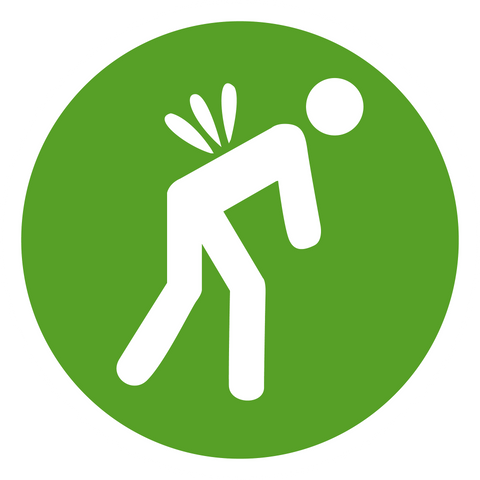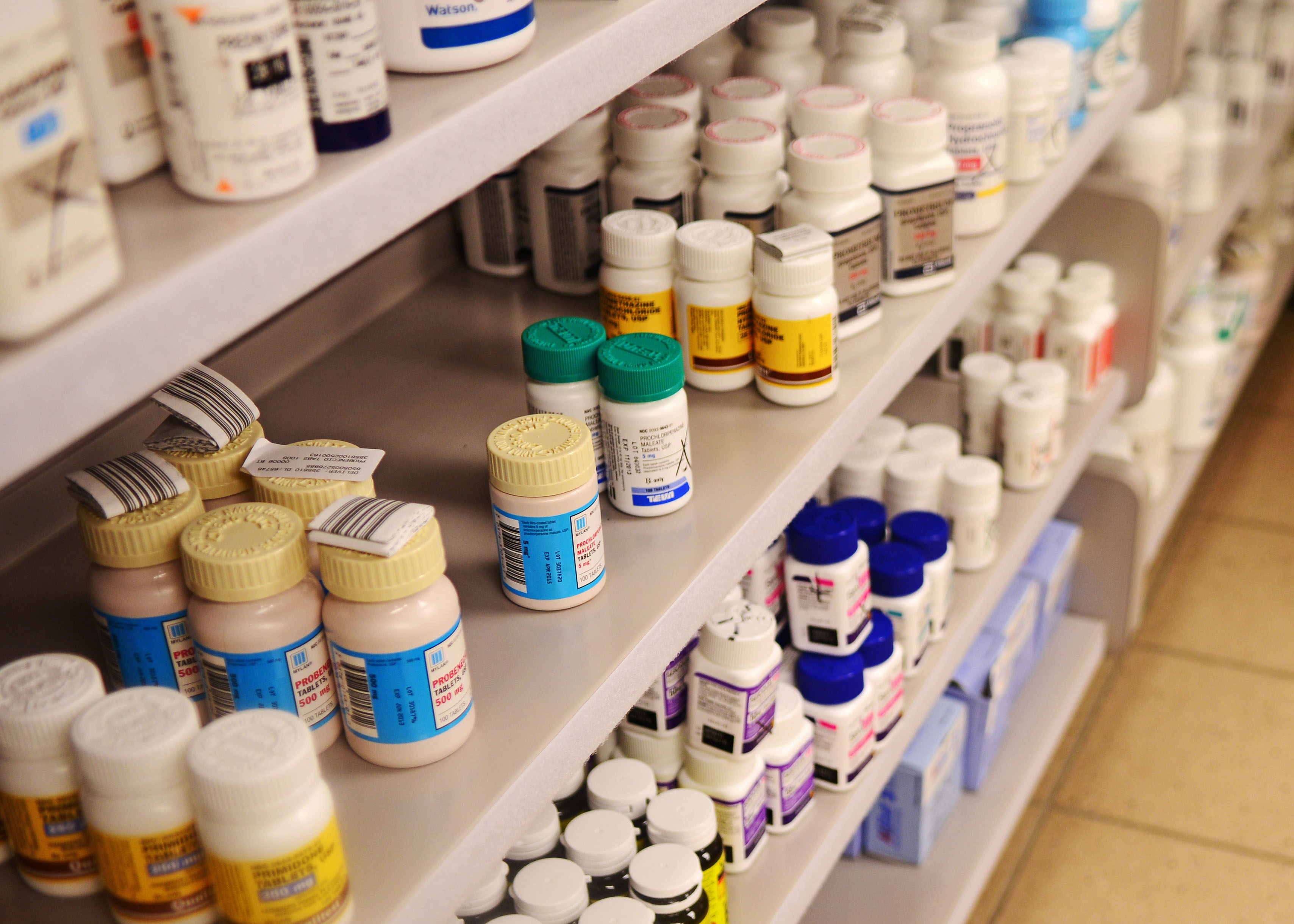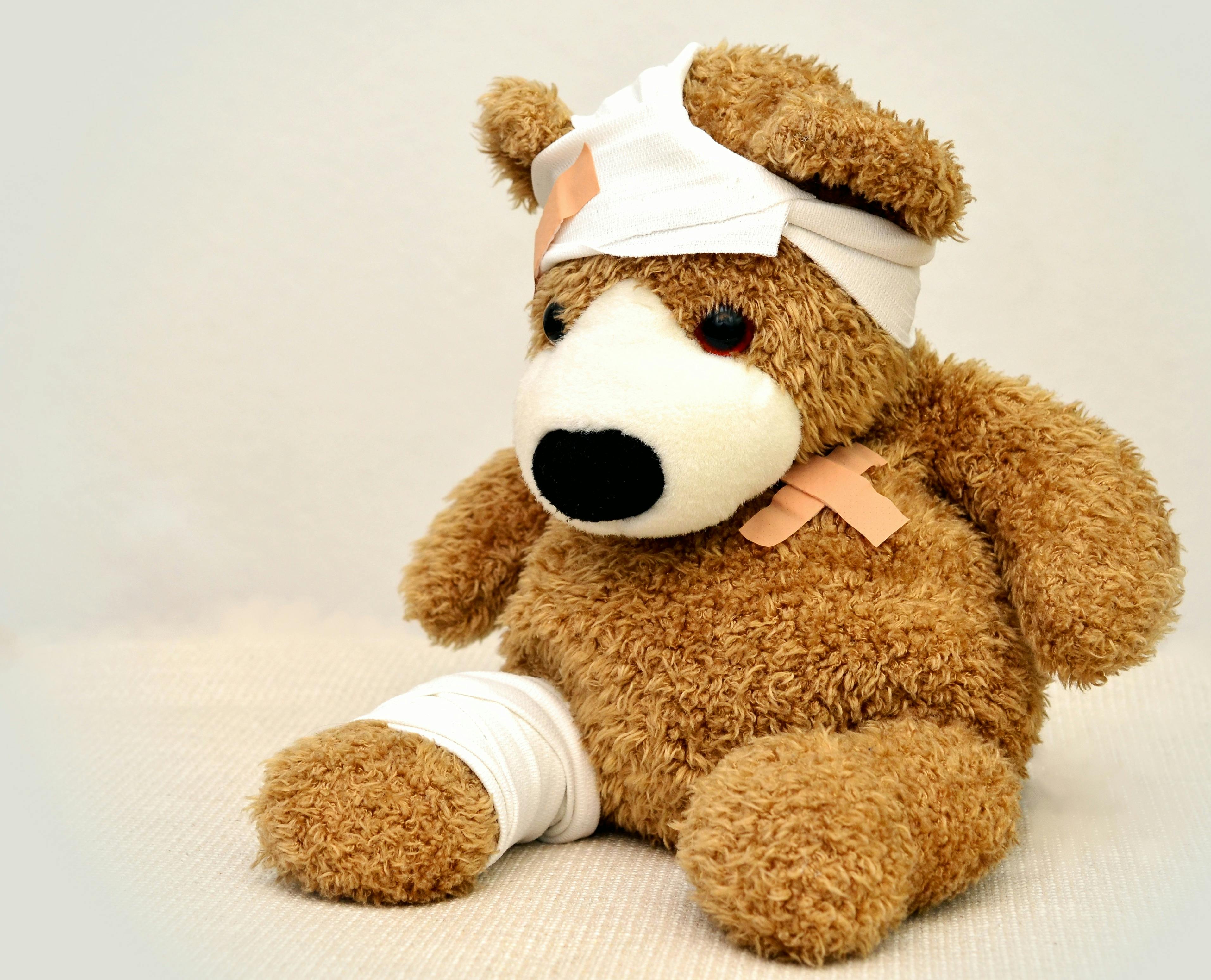Studies show that people with COPD are about twice as likely to experience chronic pain compared to people with no chronic disease. In fact, researchers found that the pain experienced by many COPD patients is severe enough to rival arthritis pain and often requires opiate medications to manage.
If you have COPD it's important to understand that the disease doesn't just affect your lungs; it has many direct and indirect effects on the body. COPD can spawn several types of temporary and chronic pain, including pain in your chest, spine, muscles, joints, and even your bones.
Some chronic pains are the result of respiratory strain and lung damage, while others are caused by poor exercise, malnutrition, and even medication. Many COPD patients struggle to eat enough and get enough physical activity, and neglecting these vital habits is a common reason for chronic muscle and joint pain.
If you or someone you love has COPD, then you'll need to know what kinds of pains COPD can cause and how to treat them. More than 45% of COPD patients are plagued by chronic pain, and some of those pains can be relieved with professional support, proper diet, exercise, and other at-home therapies.
COPD is a difficult disease to manage, and it's even harder when you have to deal with chronic aches and pains. That's why, in this article, we're going to help you understand how COPD causes pain in different parts of the body and what you can do to manage and relieve these pains.
{{cta('43b79c5e-6bd6-4f02-ac27-2d038d20c146','justifycenter')}}
What Kinds of Chronic Pains are Caused by COPD?
COPD can cause many different types of pain, and every patient's experience with chronic pain is different. However, there are a few particularly prominent causes of chronic pain that affect a large percentage of COPD patients.
Disuse Syndrome
 |
| Photo by Kristina on Flickr |
COPD symptoms like coughing, wheezing, and shortness of breath can be very hard on your body. These symptoms are unpleasant on their own, but they can also cause a variety of chronic and acute pains.
Struggling for air during exercise or bouts of breathlessness is a common cause of chest pain and tightness for COPD patients. Coughing, especially a chronic cough, can also cause serious chest pain and strain the muscles in your shoulders, neck, and back.
However, the most damaging effect of these symptoms is that they make physical activity challenging and uncomfortable. Breathlessness, coughing, and chronic pains all discourage people with COPD from exercising, practicing breathing exercises, and participating in other forms of physical therapy.
Unfortunately, these physical activities are necessary to reduce COPD-related pain and improve patients' ability to breathe. Avoiding exercise only accelerates muscle wasting, loss of mobility, and serious physical decline.
What's worse, inactivity on its own causes even more chronic pain and discomfort due to a phenomenon known as disuse syndrome. Disuse syndrome refers to a variety of chronic pains, illnesses, and even mental disorders that result from a lack of physical activity.
Disuse syndrome occurs as a result of muscle wasting, cardiovascular disease, and nervous system changes that happen when you live a sedentary lifestyle and don't use your body enough. Luckily, disuse syndrome can be reversed with regular exercise and a healthy lifestyle.
Osteoporosis

At least 20 percent of people with COPD also suffer from osteoporosis, a condition that occurs when your bones become thin, weak, and prone to breaking. This is a result of a variety of COPD-related factors, including malnutrition, lack of exercise, chronic inflammation, and even corticosteroid medications.
Your bones are made of living tissue that is constantly being worn down and built back up again, but age and illness can hurt their ability to fully regenerate. Osteoporosis occurs when your body lacks the nutrients it needs to build up your bones at the same rate as old bone tissue is broken down.
Often osteoporosis is “silent,” having no outward signs or symptoms. Many people don't realize that their bones are weakened until they get a minor injury that fractures a bone.
However, once osteoporosis becomes severe it can lead to frequent injuries that cause chronic aches and pains. People with osteoporosis are particularly prone to spinal compression fractures, which can cause severe back pain and spine disfigurement.
If you have osteoporosis even minor actions like twisting, lifting, or minor falls can cause bone fractures that take months or longer to mend. Until they heal, fractures cause chronic pain that often requires prescription pain medication to manage.
Osteoporosis is more common than usual in all subsets of the COPD patient population, but it becomes more likely with age and in the later stages of the disease. COPD patients who have had many exacerbations, have a history of smoking, or who take inhaled or oral corticosteroids are most at risk than others for osteoporosis.
Chest Pain

Moderate to severe chest pain is common ailment that affects COPD patients, especially emphysema patients, day after day.
Emphysema is a common form of COPD that results from damage to the air sacs (alveoli) in the lungs. Over time, emphysema causes your lungs to balloon and over-inflate, which hurts their ability to push all of the air out when you exhale.
Emphysema patients' lungs can become so large that they press on their rib cage and diaphragm, which causes severe pain. The pain can strike at any time and can be triggered by activities as light as walking.
Although lung over-inflation is one of the most common reasons for chest pain, another common cause is muscle tightness and fatigue. COPD symptoms like coughing and shortness of breath over-exert the muscles in your chest that you use to breathe, making them tired and sore.
Chronic coughing and gasping for air can also strain the muscles in your neck, shoulders, and back. Luckily, chronic chest, neck, and back pain can often be lessened with regular exercise, good posture, breathing techniques, and proper symptom management.
Muscle Cramps and Soreness

Muscle soreness and cramps are also common pains that affect people with COPD. These pains can result from a variety of COPD-related conditions, including malnutrition and a sedentary lifestyle.
Because COPD is an age-related disease, many patients are elderly with muscles that can't stand up to the same amount of activity and strain that they used to. This puts COPD patients at a much greater risk for muscle weakness, cramps, and pain, especially when combined with a greater risk of muscle wasting due to the disease.
Muscle cramps can also be caused by poor blood circulation, which can occur along with other cardiovascular complications in the later stages of the disease. And since COPD makes it very difficult to exercise, many patients avoid physical activity, which makes muscle weakness and pain even worse.
What's more, certain medications like corticosteroids can cause vitamin and mineral imbalances in your body that starve your muscles of the nutrients they need to function. This can lead to severe muscle cramping and weakness, adding yet another risk factor for muscle problems in people with COPD.
While muscle cramps tend to be sudden, acute pains, rather than chronic pains, they can come as an indirect consequence of chronic pain. It happens like this:
-
Chronic muscle soreness and weakness makes it difficult to exercise, leading to inactivity.
-
Lack of physical activity and stretching exercises causes your muscles to get even more stiff and painful to move.
-
You then become even more prone to getting additional muscle injuries and pains, including cramps, because your muscles are stiff and under-used.
- This can then lead to even more exercise avoidance out of fear that you will experience more painful muscle cramps and soreness.
Muscle pains are very important to treat because they make it more difficult to exercise, leading to an even more unhealthy and sedentary lifestyle. This compounds the problem, making your muscles and joints even more stiff and cramped from inactivity.
In fact, strengthening your leg muscles and treating chronic pains that make it difficult to move around are some of the most important things you can do for your COPD. Any intervention that makes your body stronger and improves your capacity for exercise has the potential to significantly improve COPD symptoms and even delay the progression of the disease.
Treatment for muscle cramps and soreness usually includes pain relievers, gentle stretching, and physical activity to reduce stiffness and improve limb mobility. We'll go into these treatments in more detail in the next sections so you can learn how to treat muscle pains and stay active with COPD.
General Treatments for Pains Caused by COPD
Over the Counter Pain Relievers
 |
| Photo by Briana Jones |
Over-the-counter pain relievers like Ibuprofen and Aspirin aren't usually strong enough for severe pains, but they can be very effective for minor ailments. If you experience muscle cramps, chest pain, sore joints, or other small pains, these non-prescription medications could help.
For example, you could use mild pain relievers to treat sore muscles after a workout or a particularly active day. You could also use them to reduce mild chronic joint pains and muscle cramps so that you can exercise and perform daily activities without significant discomfort.
If you have COPD, you should always talk to your doctor before taking any new medication, even over-the-counter medications. Your doctor can ensure that they won't interfere with any of your other prescriptions or treatments and warn you about any side effects or complications you should look out for.
Mental Health Support

It's well-known that people who are anxious and depressed experience more aches and physical pains than people with good mental health. Therefore, one way to reduce chronic physical pain is to treat the emotional pain that amplifies it.
It's not difficult to understand why mental health support is so important for people living with COPD. A COPD diagnosis is extremely distressing to receive and can cause a great deal of fear, anxiety, sadness, and regret. Most people need as much extra support as they can get, both practical and emotional, to get through this difficult time.
Even after the initial diagnosis, people with COPD have to devote a significant amount of time and mental effort to managing their disease and its symptoms, which can cause even more worry and stress. Without professional help, the severe anxiety and emotional distress that many COPD patients feel can develop into more serious conditions like chronic anxiety and clinical depression.
If you feel depressed, anxious, or are struggling with increased chronic pain, don't hesitate to seek help from a therapist or psychiatrist. They can give you emotional support, help you manage negative thoughts and emotions, and prescribe you medication like antidepressants if you need them.
Once you take care of your mental health, you will likely notice that your chronic aches and pains have lessened as well. And without the burden of chronic emotional distress, it is much easier to stick to an exercise schedule and treatment plan to properly manage your disease.
Pulmonary Rehabilitation
Pulmonary rehabilitation is a special class designed to help people with respiratory diseases like COPD take charge of their health. It includes instruction on how to exercise right, breathe better, and use medications effectively, along with a variety of other practical advice for managing chronic lung diseases.
Pulmonary rehab is a great opportunity to practice effective exercise techniques and breathing exercises that can improve your endurance for physical activity. It includes COPD-specific physical therapy lessons and tailored exercise classes that can help you reduce a variety of chronic pains, especially chest and muscle pain.
Pulmonary rehab also teaches you to strengthen the muscles in your chest and abdomen that you use to breathe, which can reduce chest tightness and pain that comes from over-inflated lungs and struggling to breathe. You can reduce muscle strain, cramps, and joint aches over the course of pulmonary rehab by learning exercise techniques that strengthen your muscles and joints.
Physical Therapy
 |
| Photo by Tech. Sgt. Kristopher Levasseur |
If aches and pains in your muscles and joints are preventing you from exercising, you might need some physical therapy before you start working out on your own. Especially if you've been sedentary for awhile, your body might not be ready to jump into action just yet.
That's what physical therapy is good for; it helps you work with and around any physical conditions that limit your ability to move. A good physical therapist will teach you how to safely stretch and move the parts of your body that ache and help you recover from injuries and pains.
Through physical therapy, you can improve your muscle strength, flexibility, and overall range of motion. In many cases, this is enough to significantly reduce aches and pains in your muscles and joints and make it much easier to tolerate exercise and daily activities.
If you're suffering from any of the chronic aches, pains, or mental effects of disuse syndrome, physical therapy is one of the best ways to jump-start your recovery. Anything that makes it easier to exercise and move your body, like physical therapy and pulmonary rehab, can help you fight chronic pains and other symptoms caused by COPD.
Massage

There's no doubt that massages are relaxing and feel wonderful, but research shows that it's an effective treatment for muscle and joint pain, too.
Massage therapy is great for COPD because it helps relax sore muscles, limber up stiff joints, and reduce chronic pain. It can also help improve your range of motion, which makes it easier to exercise and do other everyday activities.
If you suffer from chronic pain in your muscles and joints, consider getting a massage once or twice a month. Depending on your insurance provider, your policy might even cover some of the expense. Just make sure to tell your massage therapist about any and all of your health conditions so that you can have a safe and pleasant experience.
Better Posture

Poor sitting, standing and sleeping posture can lead to a variety of chronic aches and pains. If you have COPD, it's especially important to practice a healthy, straight posture to keep your spine, muscles, bones, and joints healthy.
Bad posture leads to muscle and tendon strain that can severely limit your mobility and physical endurance. Since people with COPD are especially prone to sedentary living and exercise avoidance, they are also more prone to bad posture and the negative consequences that come with it. These negative effects include muscle wasting, stiffness, chronic pain, and permanent changes to the shape and curvature of the spine.
To practice good posture, you should always keep your back straight, your chin up, and your shoulders parallel with your hips. This will prevent you from leaning, slouching, and hunching, which put enormous strain on your spine, shoulders, and neck.
To learn more about how posture affects your COPD, visit our previous article here. It will show you in more detail what good posture looks like and give you a variety of tips and advice for building better postural habits.
Targeted Treatments for Pains Caused by COPD

Now that you've read some general tips for reducing chronic pains and keeping your body strong, we're going to introduce you to some targeted treatments and techniques for treating specific aches and pains. We'll show you techniques for relieving a variety of common COPD pains, including chest pain, joint aches, and muscle cramps.
Breathing Exercises

One of the best ways to prevent COPD-related chest pain is to strengthen the muscles in your chest and improve your breathing efficiency. Exercise is the most effective way to do this, but breathing exercises can help, too.
There are a variety of breathing exercises designed to help people with COPD and other respiratory illnesses breathe easier and more efficiently. Some of the most common are pursed lips breathing and diaphragmic breathing, which you can read about in more detail here.
Practicing these breathing exercises every day can help you change how you breathe on a daily basis and help you better control other respiratory symptoms like breathlessness and wheezing. Both techniques also reduce the amount of strain that breathing puts on your chest muscles, reducing chest pain and making it easier to breathe
Mucus Clearance Techniques
A chronic cough is a major source of chest pain for people with COPD. If you find yourself sore because of a chronic cough, especially if your cough usually brings up mucus, there are a variety of mucus clearance techniques that can help.
Although it may seem counter-intuitive at first, taking the time to cough intentionally can actually prevent more painful, more exhausting coughing fits later. Controlled coughing and huffing techniques clear the same mucus out of your lungs that is often the culprit behind a chronic cough. This allows you to breathe better and exercise better without worrying about excess phlegm triggering another coughing fit.
Common mucus clearance techniques include huff coughing, chest physiotherapy, and the active cycle of breathing technique. You can also use medical devices like positive expiratory pressure (PEP) devices, high-frequency chest wall oscillation, and lung flutes.
To learn about these and other ways to reduce mucus in your lungs and airways, visit our article on mucus clearance techniques here.
Heat Therapy

Heat therapy is a favorite home remedy used to treat a variety of aches and pains. It's one of the most simple ways to reduce bone and joint pain, and it works on stiff and sore muscles, too.
Heat therapy works by increasing blood flow to the affected bone or joint, which allows the body to transport extra oxygen and nutrients to the area. This can help the injury heal faster and also provides a soothing, warming sensation that temporarily reduces pain.
To apply this treatment, you'll first need a convenient, portable source of heat, such as a hot water bottle. Then, wrap your heat source in a towel to protect your skin from the extreme temperature. Next, press the hot pack on to the affected muscle, bone, or joint for up to thirty minutes at a time. With any luck, you should experience pain relief after only fifteen or twenty minutes.
What makes heat therapy so great is that it is simple, convenient, and has an immediate soothing effect. And if you don't have a heat pack at home, you can easily make one with items around the house.
Here are some ideas for heat sources you can use to relieve pain in your muscles, bones, and joints:
- Electric heating pad
- Hot water bottle
- Single-use heat packs (e.g. Hot Hands packets)
- A hot shower or bath
- Fill a sock or other fabric pouch with rice, then microwave for a couple minutes until hot.
Increase Calcium and Vitamin D in Your Diet

A major contributor to osteoporosis is a lack of calcium in your diet. It can also be caused by too little Vitamin D, which your body requires in order to absorb and utilize the calcium your eat.
While extra calcium is not a cure for osteoporosis, it can help prevent osteoporosis and reduce bone density loss. If you have COPD, you are at a very high risk for osteoporosis and you should be especially careful to get the recommended amount of calcium in your diet, which is usually about 500-1000 mg.
Here are some good sources of calcium you can add to your diet to protect against osteoporosis:
- Dairy (e.g. milk, cheese, and yogurt)
- Collard greens
- Kale
- Salmon
- Sardines
- Foods fortified with calcium (e.g. tofu, orange juice, cereal, and almond, rice, or soy milk)
Here ar


 So we can find the best portable oxygen concentrator for your needs!
So we can find the best portable oxygen concentrator for your needs!








Duke Reeves